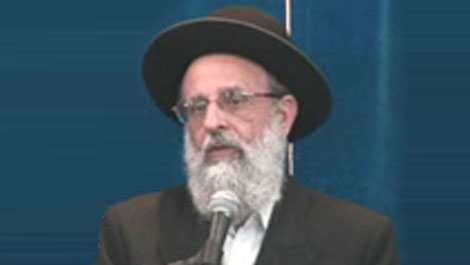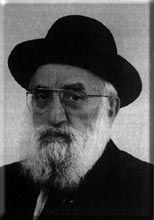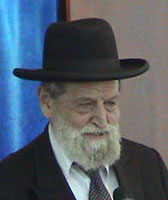Beit Midrash
- Sections
- Chemdat Yamim
- Parashat Hashavua
- Torah Portion and Tanach
- Bamidbar
- Chukat
Let us look at other examples in Tanach where occurrences involving clothes indicate a crucial event. After Shmuel informed Shaul that Hashem had become disgusted by Shaul’s reign and turned to go, Shaul grabbed for Shmuel’s cloak, which tore as a result. Shmuel commented metaphorically: "Hashem has torn the Kingdom of Israel from you and given it to your counterpart who is better than you" (Shmuel I 15:26-28). We see in that context that the ripping of a garment was a sign of the removal of King Shaul from his reign.
A second case is when Shaul dressed the young David with his battle uniform so that David could fight Goliath (Shmuel I, 17:38). Chazal explain that Shaul understood that in the course of this action he had unwittingly appointed David as his replacement. David also had such an understanding, which would explain that David’s removal of the uniform was to not accept that distinction (see Rashi, ad loc.).
Eliyahu approached Elisha and threw him his mantle (aderet) (Melachim I, 19:19) as a sign that Elisha should follow him. Later on, Elisha lifted up Eliyahu’s aderet, which had fallen as Eliyahu was taken to the heavens, and used it to cause the Jordan to split and allow him to pass (ibid. II, 2:13-14). This transfer symbolized the student’s inheritance of his master’s prophetic leadership.
The famous story of Haman suggesting that Achashveirosh allow him to wear the king’s clothes (Esther 6:7-9) is another example of the symbolic significance of wearing a leader’s special clothes.
This thesis gives added meaning to the episode at the end of David’s life when his clothes failed to provide him with warmth (Melachim I, 1:1). The gemara (Berachot 62a) explains that whoever disgraces clothes will at some point lose the ability to benefit from them. The Radak describes this idea as an extreme one. However, we will explain it in a way that the Radak might be able to accept. We already discussed one case of David’s contact with Shaul’s clothes as a sign of his impending claim to the throne. When Shaul approached David while he was hiding in a cave, David ripped the corner of his cloak. This, too, represented a compromising of Shaul’s position. At the last stage of David’s life, he had to deal with the question of who would succeed him as king. Some of the people closest to David tried to usurp his right to make that decision. This situation finds expression in the idea of David’s clothes no longer being useful to him. The first section of Sefer Melachim describes how David dealt with that challenge (beyond our present scope).
Let us pray that we will be able to find the right way to identify the correct candidates for positions of spiritual leadership and to "clothe" them in the appropriate way for the task.

Glory in the Clouds
Rabbi Yossef Carmel | 7 Shvat 5768

Parashat Hashavua: The Journey … from Charan to Mt. Moriah and Beyond
Rabbi Yossef Carmel | Cheshvan 5786

Parashat Hashavua: From Paroh to Hamas and Iran – In Those Days at this Time
Rabbi Yossef Carmel | Kislev 5786






















